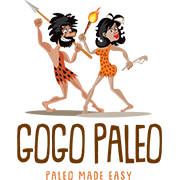LET’S TALK ABOUT KETO
The most frequent request I receive is to describe the difference between Keto and Paleo. There are dozens of books on the subject but I will try to keep it in a nutshell. Keto is more carbohydrate restrictive than Paleo, with the daily carb consumption kept below 50 grams. The sweet spot for Paleo is 50-100 grams. The goal of the Keto diet is to keep the body in a state of persistent ketosis. This is when the body is forced to burn fat for fuel in the absence of sufficient carbohydrates to supply the alternative fuel, glucose.
When our consumption of carbohydrates is low, the release of the hormone insulin will also be low. Insulin is a fat-storing hormone. When it is released following a large influx of carbs (say a piece of cake), insulin rushes into the blood stream to remove the offending glucose….sending most of it to our fat stores. In the absence of this insulin the body is stimulated to convert body fat for fuel. That’s why the Keto diet is so popular as a successful means to lose weight. Body fat will melt away when it is forced to. The Keto diet is broken down as follows:
FATS
While the main source of nutrients in the Keto diet is fat, it is not a fat free for all. The fats supplying Keto are the same as for Paleo, meaning they come from the healthiest choices possible. The meats, eggs, and dairy should come from pasture raised, free range animals which were never fed antibiotics or hormones.
Cooking oils should be from cold pressed sources like olives, avocados, and sesame seeds. Saturated fats like butter and coconut oil are also allowed. Oils to avoid are canola, soy, corn, peanut, and sunflower. These go through a high heat process that makes them toxic and inflammatory. Fat makes up about 70 % of the daily calories in the Keto diet. That leaves 25% for protein.
PROTEIN
The protein sources for Keto is similar to Paleo with a noted difference in the addition of dairy. The dairy should be full fat because lowering fat content results in the addition of carbs. For more information go to the website www.gogopaleo.com and read The First 30 and Fascinating Facts.
CARBOHYDRATES
Carbs make up only 5% of the daily calorie consumption on the Keto diet. While that sounds frighteningly low, the vegetables allowed are very low in calories and can be very satisfying. The source of these carbs is mostly vegetables grown above ground. These include leafy greens, cabbage, zucchini, broccoli, cauliflower, asparagus, celery, and cucumber. These vegetables are loaded with nutrients, vitamins, and antioxidants.
Fruits are allowed more liberally in the Paleo diet but with their natural sugars the calories quickly add up. A few berries here and there would be the limit. Because of the nature of the restrictions on the Keto diet, not many people will want to follow it for a lifetime. That is why I like to combine features of Keto and Paleo, mainly adding dairy to my diet. I find that I can tolerate it without discomfort.
The Keto diet is an excellent choice for weight loss and sticking to it is imperative to maintain the body in a ketotic state and allow the fat to melt away. When you are satisfied with the results, start adding carbs toward a more Paleo approach. GOGOPALEO!

